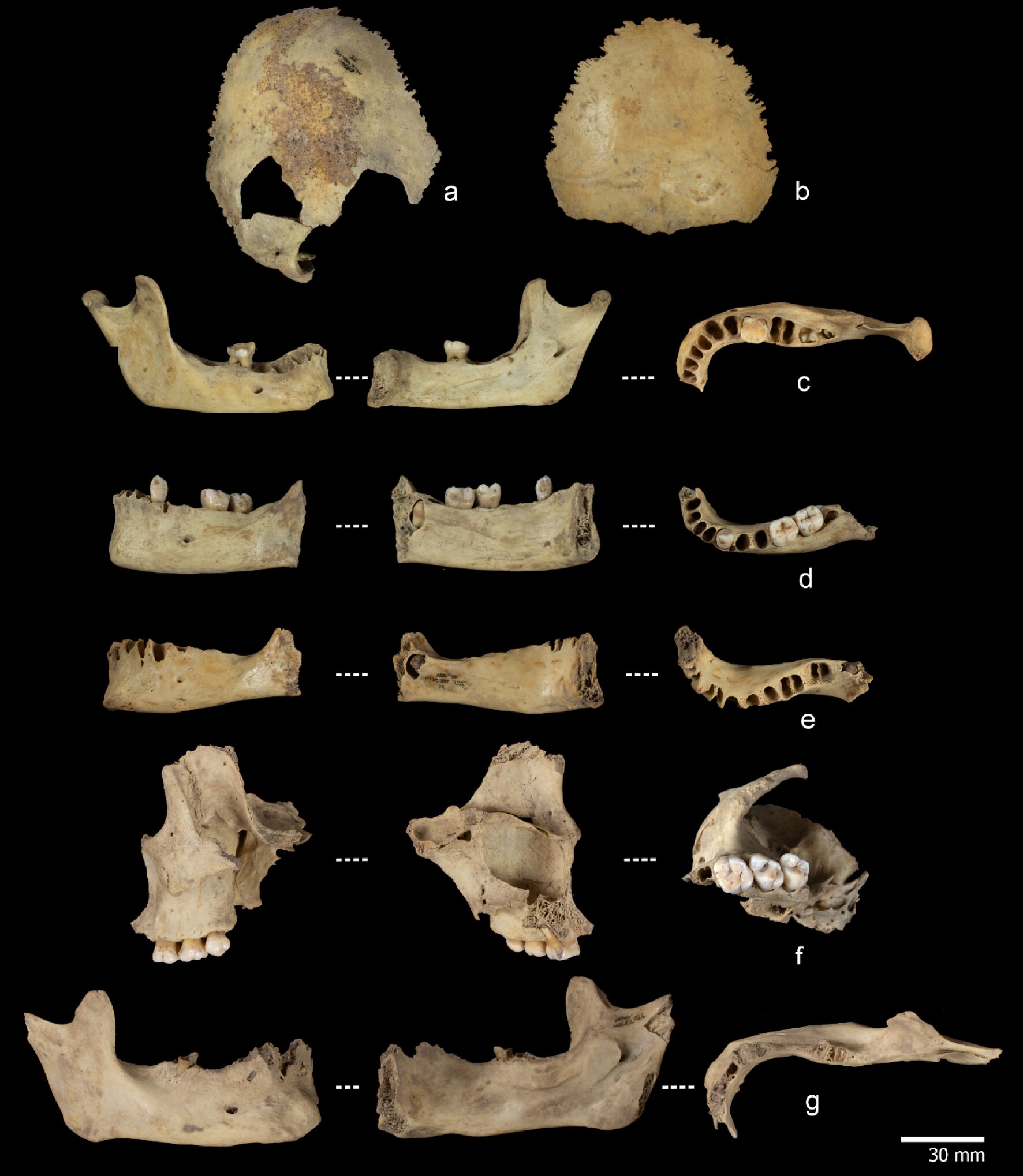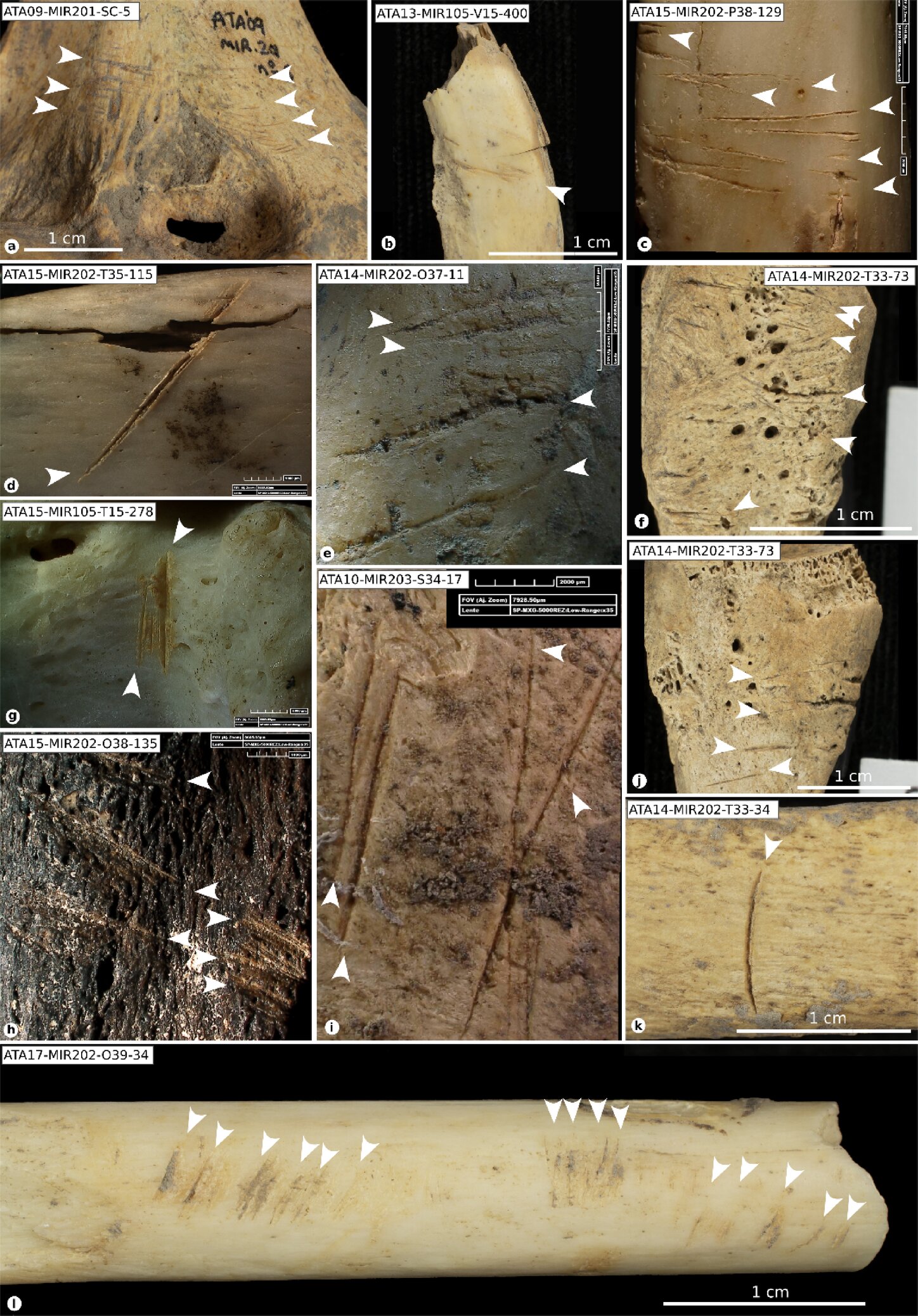🍖 They ate their neighbors, without necessity
Follow us on Google News (click on ☆)
Researchers, led by Francesc Marginedas of the Catalan Institute of Human Paleoecology and Social Evolution, examined more than 600 bone fragments from 11 well-preserved skeletons, including adults, adolescents, and children. These remains, dating back approximately 5,700 years, were uncovered in El Mirador cave, located in the Atapuerca mountains in Spain. The thorough study of these bones identified butchery marks and signs of cooking, indicating systematic manipulation of the bodies after death.

Specimens used to estimate age at death.
Credit: Scientific Reports (2025).
Microscopic analysis showed that all the bones had incisions and cut marks, characteristic of skinning and dismemberment. Some bones showed translucency and slightly rounded edges, suggesting they had been boiled to extract marrow or facilitate consumption. These practices, carried out after death, indicate an organized and non-accidental process, raising questions about the motivations behind these acts.
Scientists ruled out the hypothesis of survival during famine, as no evidence of food shortage was found in the region at that time. Moreover, it was probably not funerary rites, as no similar practices have been documented elsewhere. The bones appear to belong to a family or extended group, and researchers believe they were victims of a violent event perpetrated by a neighboring group, related to intercommunity conflicts.
This discovery fits into a broader context of violence during the Neolithic period, with similar evidence found in France and Germany. It helps nuance the idyllic image of this period, often perceived as an era of peace and agricultural development, instead revealing hidden tensions and brutalities.

Specimens with cut marks. Cut marks (white arrow) on human remains from contexts S100 and S200.
Credit: Scientific Reports (2025).
El Mirador cave continues to reveal secrets, with previous discoveries including ceremonial skulls and other evidence of cannibalism from the Bronze Age. This work, published in Scientific Reports, enriches our understanding of the complex social dynamics of our ancestors and raises new questions about the evolution of human behaviors.
Cannibalism in human history
Cannibalism, or anthropophagy, refers to the consumption of human flesh by human beings. This practice has been documented in various eras and different cultures, often associated with ritualistic contexts, extreme survival, or conflicts.
During prehistory, archaeological evidence shows that cannibalism could serve nutritional purposes during famines, but also as a symbolic act in ceremonies or to mark domination over enemies. Traces on bones, such as cut marks, help researchers distinguish these motivations.
In the case of the El Mirador study, the absence of signs of famine and the systematic nature of the manipulations indicate that cannibalism was likely related to intergroup violence rather than necessity.
Today, cannibalism is extremely rare and generally condemned, but its study helps us better understand the evolution of cultural norms and human behaviors in the face of adversity.
Analytical methods in archaeology
Archaeology uses various techniques to study ancient human remains and interpret past practices. Microscopic analysis, for example, allows examination of fine details on bones, such as cut marks or alterations due to cooking.
Butchery marks, often compared to those left on animals, help identify the tools used and cutting techniques. The translucency of bones, observed in this study, indicates exposure to heat, probably through boiling, which alters bone structure and facilitates marrow extraction.
Carbon-14 dating and other absolute chronology methods allow events to be placed in time, while the study of archaeological context, such as the presence of other artifacts, helps reconstruct the lifestyle of populations.
These combined approaches offer a more precise view of human behaviors, even when dealing with taboo practices like cannibalism, and contribute to a more nuanced interpretation of history.